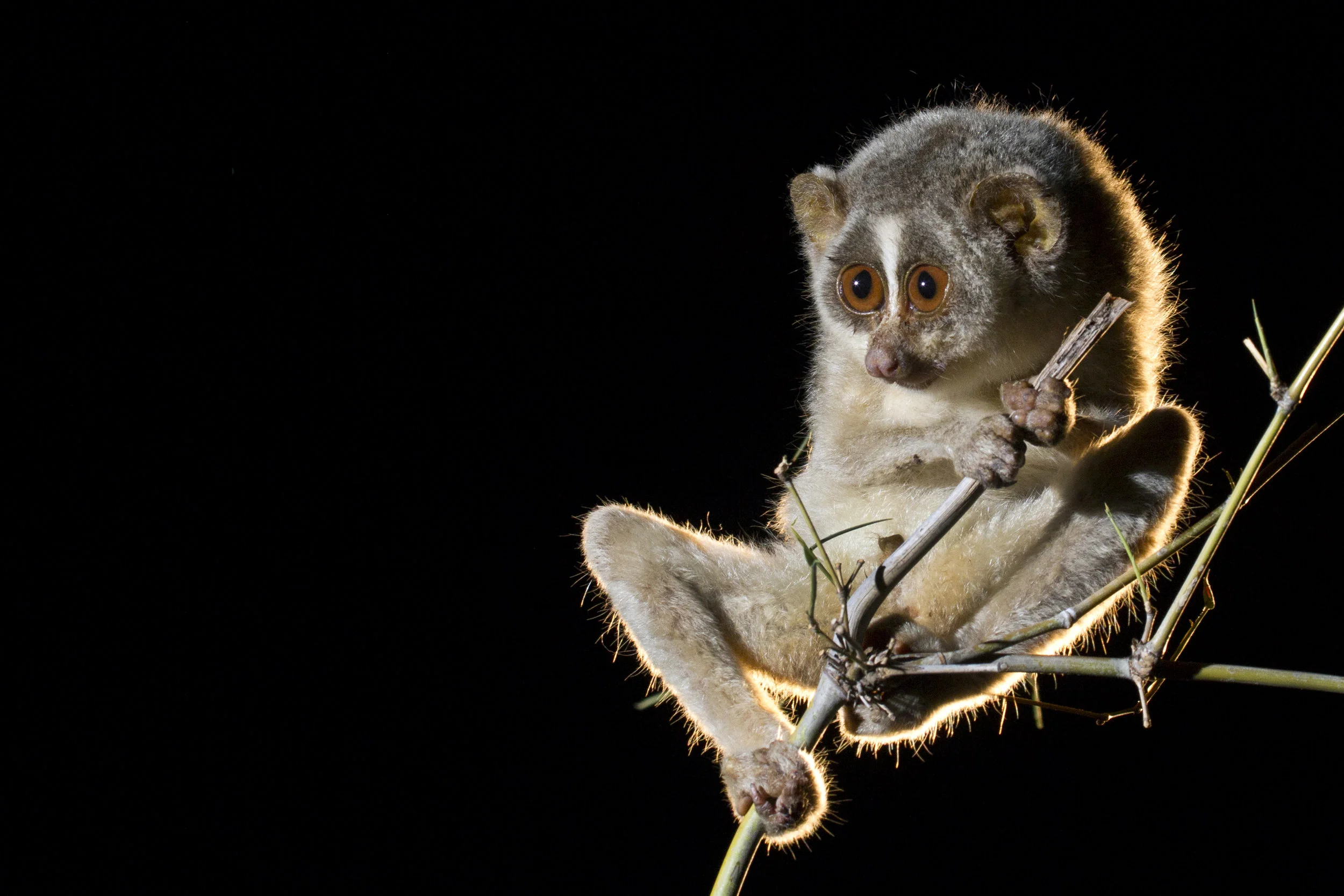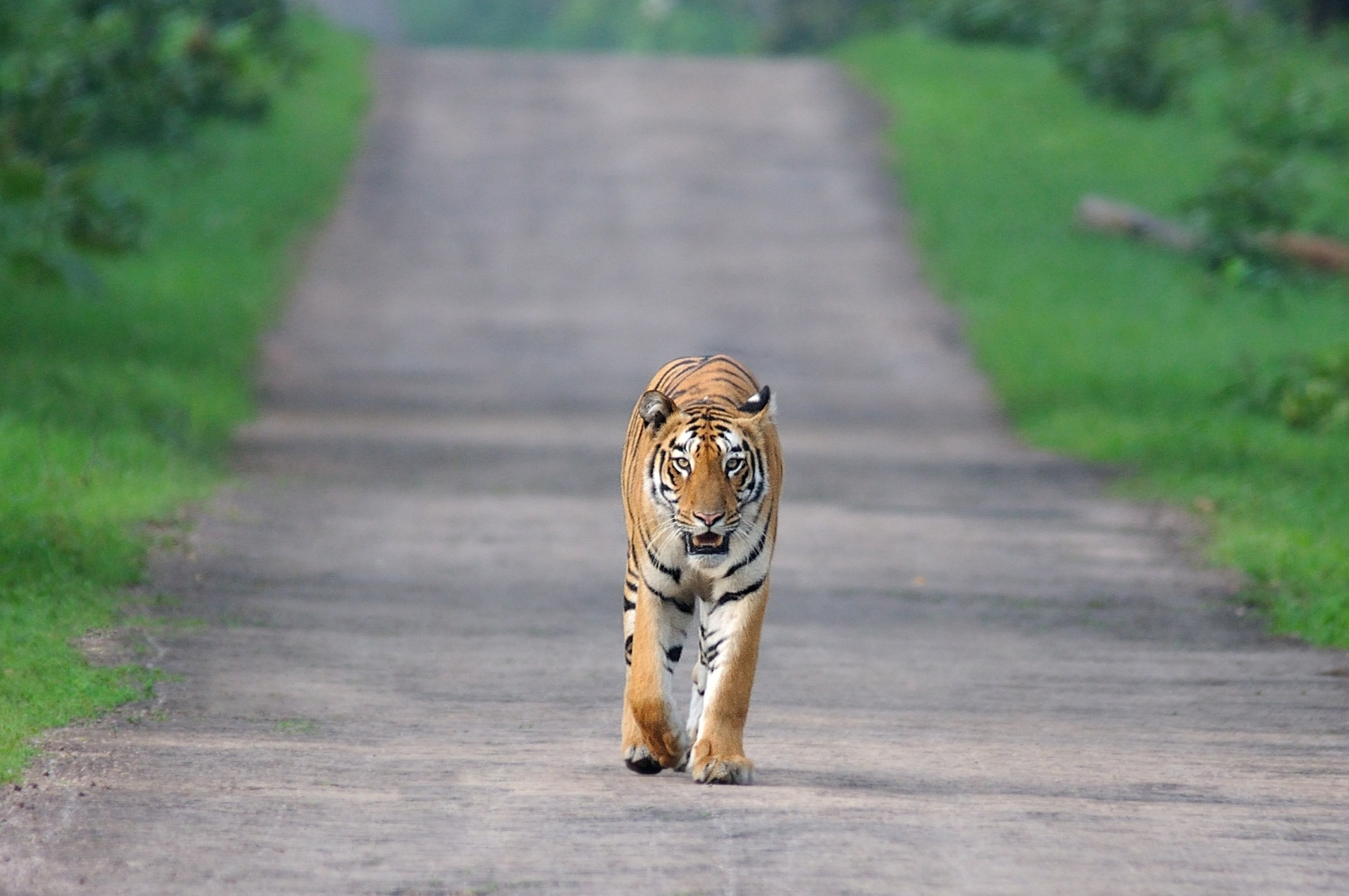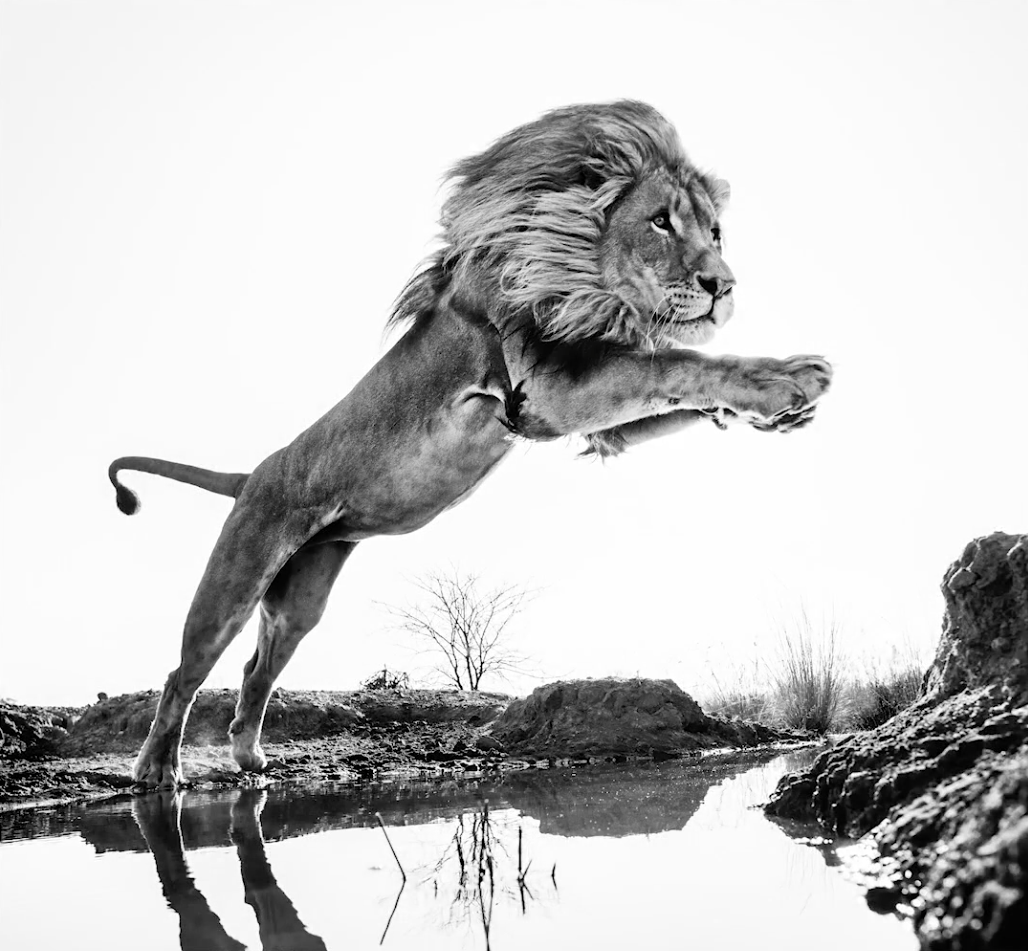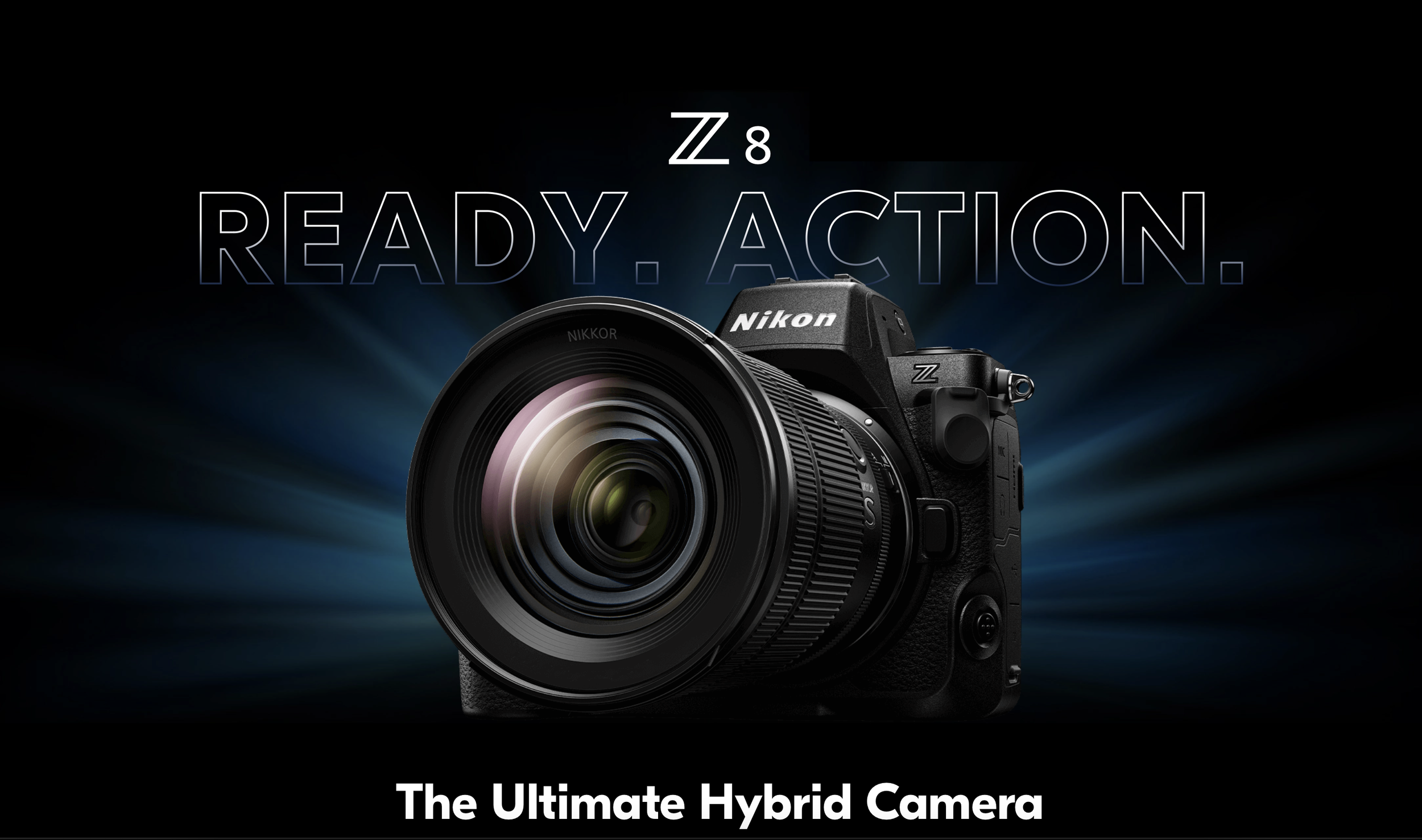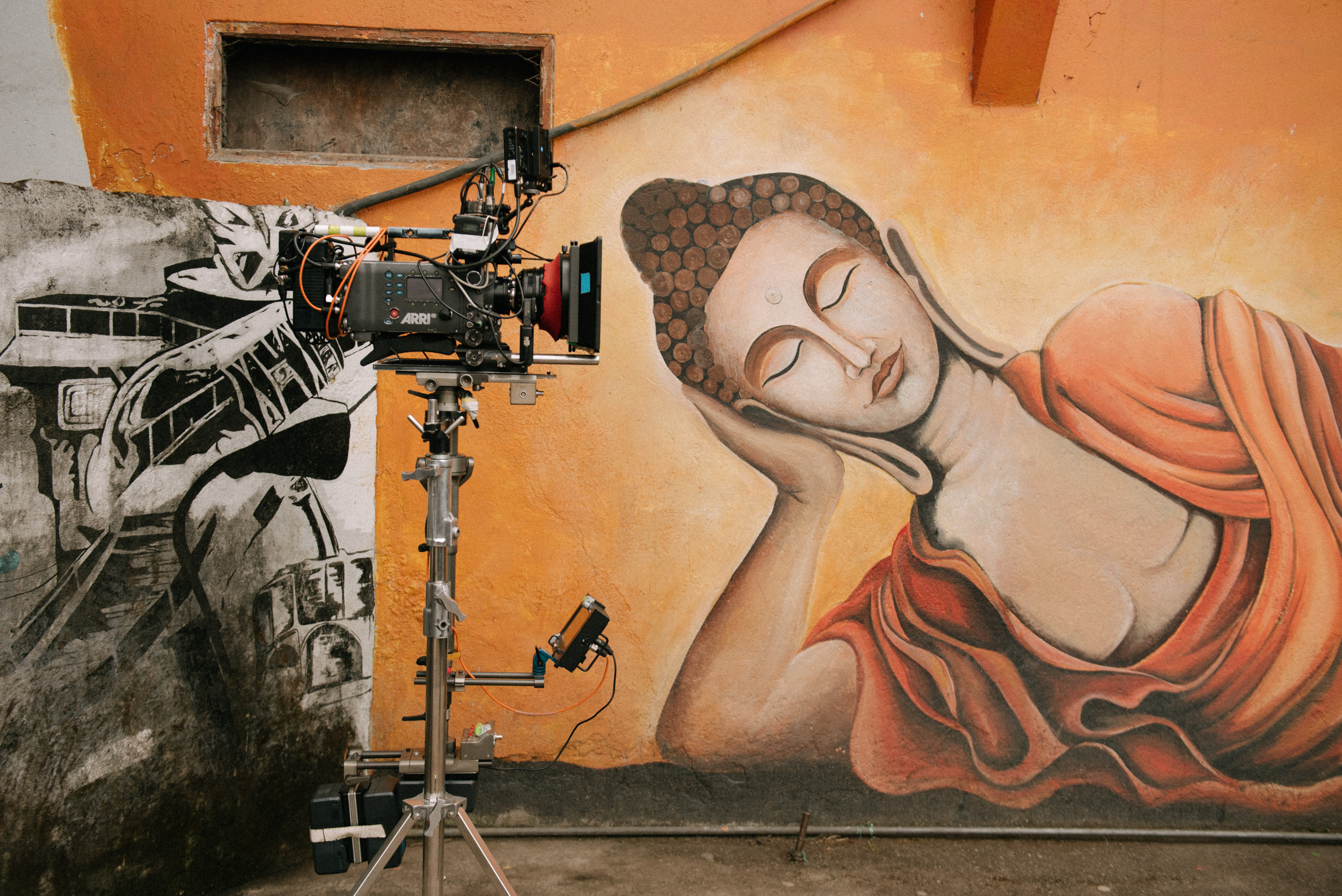
Wildlife Photography - The Sad Reality | Diinesh Kumble in frame with Gorky M
We, the ones with reasoning, have it upon us to show concern for these animals.
Wildlife Photography is supposed to be an art that’s bigger than itself. Because we, the ones with reasoning, have it upon us to show concern for these animals.
“Wildlife photography is a genre of photography concerned with documenting various forms of wildlife in their natural habitat.”
Photograph by © Diinesh Kumble
As a wildlife photographer, you try to capture the diversity and the behavior of these animals in their natural habitat because we don’t see them very often. But the burgeoning of social media and the availability of top end cameras in the hands of every person has also increased wildlife tourism in the last couple of years. What used to be a moment of awe has now turned into an opportunity to photograph a wild animal as a means of validation on social media. Enthusiastic tourists don't even read up on the rules and regulations before diving in with their cameras, and they seem to be getting more and more desensitized with every attempt or Safari.
There is also a need for high-end camera gear to be able to photograph these animals without becoming a nuisance, and most of the tourists forego these requirements because it’s a one time thing.
Live and let live. Photograph by © Diinesh Kumble
“Calling yourself a wildlife photographer adds a bit of glamour (to their personality). They think that they’ve done something. They’ve shot an animal for fun.”
About a decade ago, wildlife photography was conducted by passionate photographers who had to stick out in the wild, with no amenities like electricity or food. There were certain challenges to the art and only the ones who had planned enough were able to make a difference. There was a major emphasis on not disrupting the laws of nature. You could forget about cellphone receptions, too.
“What brought me to wildlife photography was the passion to be out in the open and amongst nature. ”
An increase in the popularity of wildlife photography combined with the desperation of forest officials to make a quick buck has enabled them to turn a blind eye to any unethical practices by the amateur and safari guides. This often has devastating consequences, and it’s mostly the animals that suffer.
Wildlife photography is an art that also needs your compassion. Photograph by © Diinesh Kumble
The disturbance caused by the increasing number of off-road trips taken by safari agents, camera flashes being triggered, catcalling and hooting have led some of the bigger animals to attack the jeeps and tourist vehicles, sometimes even wounding people fatally. And the number of these attacks is increasing by the day.
Wildlife tourism is booming, and with more and more people paying visits to wildlife sanctuaries, herds are motivated to migrate to a different territory, often encountering human settlements on the way and panic stricken villagers don’t always take kindly to a tiger in the vicinity.
ALSO READ: “There isn’t a demand for in-depth stories like there used to be" - National Geographic Photographer Ira Block
Some reckless photographers have resorted to feeding the animals, playing back recordings of mating calls to get a close-up shot of an exotic or preserved species. The safari guides bring their jeeps too close to the animals on the whim of their clients just so they can score a close-up photograph.
Rare Species: a lion tailed macaque photograph by © Diinesh Kumble
“Today wildlife photography has become like game-hunting. Instead of killing an animal, you’re taking a picture of it. But the way the people chase (the animal) sometimes, it hurts to look at it.”
A lot of times, the malpractices are discovered and the responsible persons are suspended or fined, but it has become a mindset of forest officials to employ unethical means to help their clientele get their spectacular #WildlifeShot
SOURCE: Getty Images
To be able to make a difference, we have to practice patience and kindness in equal measure. Sometimes, not disrupting a natural habitat is more important than getting a coveted picture. The animals are not there for our amusement.
The surge in the wildlife tourism industry has also resulted in saturation of wildlife photography. Anyone with a camera thinks they can go on a Safari, come back with a few pictures and pass it off as wildlife photography. “There are not many people who can tell the difference between an image taken by a wildlife photographer, and a regular person”, says Diinesh Kumble.
“There’s a very thin line between safari photography and wildlife photography which is being muddled today. A lot of people think that by going on a safari three hundred times in a jeep is wildlife photography. It is not. You go in a jeep just to protect yourself.”
Slender Loris are a genus that’s native to India and Sri Lanka. Picture by © Diinesh Kumble
And it’s not just the pictures you’re there for. As a wildlife photographer, you also have a responsibility towards the animals you’re photographing, believes Diinesh Kumble. He has an affinity for a small species called the Slender Loris, commonly known as Paapa or Kaadoo around Karnataka. However, there are many myths surrounding the creature, one of them being that it has magical properties - which has lead to the poaching of this little creature in order to be sold on the black market. Click here to watch a video documenting this unspeakable trade based on superstition and hearsay.
Every year, hundreds of Slender Lorises are smuggled illegally to meet the demands of the exotic pet trade. Photograph by © Diinesh Kumble
Diinesh has been instrumental in speaking and campaigning for the preservation of the Slender Loris, and has even adopted it as the mascot for Kaadoo, one of the companies he helped form. If your heart goes out to these little creatures and you would like to make a difference, please visit http://www.peopleforpaapa.org/
While ignorance and unethical behavior certainly wounds the art of wildlife photography, you shouldn’t be discouraged to give it a go. Wildlife photography is a crucial field in photography. It contributes to the conservation of and in helping raise awareness on a species, not to mention the role it plays in ecological and biological studies and the various aspects of science. To learn more about wildlife photography, watch Diinesh Kumble speak with Gorky M on the nuances of the craft by clicking on the video below.
5 Wildlife & Macro Photography Tips For Beginners By Photographer Yuwaraj Gurjar | In Frame With Gorky M, Episode 3
Wildlife photographer Yuwaraj Gurjar shares some important tips for those looking to get into wildlife photography and macro photography.
In the third episode of our latest photography series, ‘In Frame With Gorky M’, one of India’s authority figures on wildlife and macro photography, Yuwaraj Gurjar, sits down with filmmaker and photographer Gorky M - and shares some very important tips and secrets for beginners or those looking to get into wildlife photography and macro photography full-time. Be sure to note these down before going out to photograph.
You Cannot Pursue Wildlife Photography Full Time
Wildlife photography isn’t one of the commercial or the most glamorous photography genres out there. While there is a niche and a demand for it, it is also important that you’re taking up commercial assignments to keep yourself afloat. Wildlife photography is a fascinating genre, but not a high-income genre in photography unless you’re an established wildlife photographer.
Do Your Homework & Come With The Right Gear
According to wildlife photographer Yuwaraj Gurjar, preparation for a wildlife photography expedition begins three to six months in advance.
Going to wildlife sanctuaries and conservatories and photographing animals and birds is fine, but you must read up on your subjects before photographing them. It is important you know how to work your camera and you have the right lenses for photographing the birds and the wild animals you might see. Read the rules, regulations, and brochures of the safari or national park you’re visiting to avoid breaking any laws or committing any offenses, and talk to local guides and figure out where you might find a particular bird or an animal, so you’re in the vicinity when there is an opportunity to photograph them.
READ: Photography Tips From National Geographic Photographer Ira Block!
Having A Love For Nature Is The Bare Minimum
Be prepared to get down and dirty when you’re out in nature. © Yuwaraj Gurjar Photography
Those who pursue wildlife photography and the various genres that it encompasses such as nature, animals, flora and fauna, landscapes, birds, macro - have a genuine love for mother nature. You must ask yourself if you’re passionate enough about it. There will be times when you have to climb hills, photograph in the rain, climb down ditches and unsavory places to photograph, which requires a level of patience and dedication that isn’t always possible. This is why it’s important that you are passionate enough about wildlife photography and only then will you be able to make somewhat of an impact with your work.
There Is Already A Lot Of Work On Tigers and Elephants
An Indian Tiger Photographed by © Yuwaraj Gurjar Photography
Don’t be discouraged by this, we’re simply saying this so you’re aware. Established wildlife photographers have already done a lot of work on Bengal Tigers, Indian Elephants and Dolphins etc. So make sure, if you’re photographing similar species, that you look at it from a different perspective - so your work is able to stand out. There are also many species that people aren’t looking into. They could be unique to the area you live in, or a variation on the species that are already out there. “People are still discovering new birds in the Himalayas,” says Yuwaraj Gurjar. Maybe you could try Macro photography - where there’s a higher chance of finding something new or coming across a rare species.
Macro shot of a Vine Snake gulping a Frog, © Yuwaraj Gurjar Photography
Macro Photography is a versatile genre of wildlife photography where there are tonnes of species to photograph and new things to find.
Travel With A Group Or An Experienced Professional
Even accomplished photographers prefer to travel in a group on a wildlife photography excursion, says Yuwaraj Gurjar. Image © Yuwaraj Gurjar Photography
This really matters. If you’re looking to learn the ropes of wildlife photography or macro photography, it is better if you travel with an experienced wildlife photographer so you learn more quickly than you would on your own. The cost of a wildlife safari also becomes more manageable when divided between 4-6 people. Not to mention that it is also a safety concern, so traveling to jungles and forests in groups or with local guides becomes essential. The local guides are usually chatty, and if you were to engage them in conversation, they would be more than willing to help you and give you an idea of the species or animals that live in a particular habitat.
And that’s not all. There are many more insights and little tips to help you start your journey as a wildlife photographer in the video below. Yuwaraj Gurjar also has advice on which lenses and camera gear to use for wildlife photography. Be sure to subscribe to us on YouTube if you want to watch more videos like the one below.
Presenting Episode 3 of the series - In Frame with Gorky M. In this episode, Gorky M. speaks with accomplished wildlife and macro photographer Yuwaraj Gurjar. Yuwaraj Gurjar is one of India's best wildlife photographers and one of the authority figures on macro photography worldwide.
Wildlife photography with wildlife photographer David Yarrow
Wildlife photography as art
For most people making a living off photography is a dream and quite a few people keep chasing their dream and shooting all kinds of photographs without relooking at the philosophy behind their photographs.
Yes. Learning photography is just not enough - there is a philosophy that needs to shine through the pictures and only then will there be a value to them. This applies to any kind of photography - wildlife photography, portrait photography, wedding photography or any other.
David Yarrow is a photographer whose photographs sell for as much as £ 14,000 (Source: The Daily Mail) How did he do this? By rethinking the way he took photographs! He thought of Robert Capa's quote "If your photographs aren't good enough, you are not close enough!" and changed his way of shooting. He says that if you are into wildlife photography and you are "looking down" on your subjects - then they are nothing but snapshots that you can show to your children.
To turn his photographs into works of art that sell for astronomical amounts, he really gets up close and personal to his subjects. He takes photographs by placing his cameras really close and triggers them via remote.
In this interview given to YouPic, he talks about all this and much more that defines his photography. GMax Studios is proud to be associated with YouPic in bringing you this interview with David Yarrow. Watch it to truly get inspired. We guarantee it will inspire you - no matter what kind of photography you do.
TRANSCRIPT OF THE VIDEO
[SOUND] [MUSIC] We bring together for you, the best photographers in the world. [MUSIC] >> Andy Warhol said, my favorite color is white and my favorite color is black. So use the whites, use the blacks, don't have fifty shades of grey. We'll have that as well, but use the blacks and use the whites.
[MUSIC] I got fascinated in sharks because I felt that sharks hadn't been photographed well. After about 30 hours dedicated in the water to this, I got the big shot of the shark and a seal. And I still think it's the strongest picture of shark predation that I know, and it's pin-sharp.
[MUSIC] And then someone said to me, do you see that picture in the Daily Telegraph, can I get a big one for my office? Because I want anyone that comes into my office to be very scared of me, and the best way of doing that is to have a big shark eating something behind my desk.
And he said, how much would it cost? I said, I don't know, but we'll put in a nice frame may be for 5,000 Pounds. And he said, okay, I'll have two. And that was when the penny dropped that the way to make money from my kind of photography was in fine art. Producing limited edition fine art prints that were aesthetically strong enough, or evocative enough that people would put them on their wall.
[MUSIC] I think the mistake a lot of photographers, wildlife photographers make is that they go on a trip without any specific idea of what kind of African animal they're gonna be shooting. And for me you go, you choose the animal, and then you know where you're gonna go to photograph the animal.
And by far and away, the best place in the world to photograph elephants is Amboseli. Wildlife photographers, many of them use telephotos far too much. If you're gonna be photographing a beautiful woman, you're never gonna shoot her with a 400 millimeter lens or even a 200 or a 300.
You'd shoot her with a standard lens or a wide angle, and it should be the same with animals. It's then just the logistical issues, how you get yourself in a position to do that whilst remaining safe. [MUSIC] The great beauty of elephants is there's no animal where their predicted path can be determined with greater clarity and assurance than an elephant, they tend to walk in straight lines.
So if you see a herd walking across a dry lake, you get 200 yards ahead of them, and you know probably where they're gonna, within a yard, where they're gonna come. You got the peak of Kilimanjaro peaking out over the top of the clouds, and the light's getting better every five minutes, these are probably not bad circumstances.
You can see the big guy with that big tusk over there on the left, sadly that's about 8 grand in the local market, and that's 60 grand in China. You put the remote down, and you prefocus and then you get the hell out of there, so that they're in no way detoured by you. And they probably don't see the camera until they're about a foot and a half away from it, which is perfect because that's what you want.
So you want proximity and a ground level perspective. Okay, so I'm gonna get out of the car, I'm gonna set up the remote. [MUSIC] I walked into a little bit of elephant manure. Okay, let's get out of here. [MUSIC] Okay, let's go and grab it. [NOISE] There's nothing I wanna do less than photograph with blue sky and sunshine.
I want moody, almost sort of impending doom in the skies, and you get that in Amboseli in October. It's the best canvas on which to paint with light, and take pictures of anywhere in the world I think. [MUSIC] The behavior of elephants has changed because of cattle. Because the Maasai brought their cattle in, in big numbers into the park, and that's resulted in more humans and more lions.
So the elephants don't behave in the way that they used to, and lake crossings are rarer. [MUSIC] I position scouts on the hills overlooking Amboseli dry lake, and as soon as they see the beginnings of a herd crossing the lake, we'll find out. And on this occasion it was the middle of the day, which doesn't tend to suit my style because the sun's too high, but gratifyingly there was quite a lot of cloud cover, and it was a big herd, it was 25 elephants, and I didn't even have my photographic clothing on.
I was just hanging around in swimming trunks and loafers, but we charged there to the lake, and must have been going goodness knows what speed. And this series is about 15 minutes, but there was one lovely moment where I was lying on the ground, and the elephants were about 60 yards away from me, and they just didn't know whether to go left or right of me.
They don't tend to charge there because there is no vegetation, so they're not surprised, they know the human is there. The time you gotta be careful of an elephant is when you surprise it, but in Amboseli you're quite safe, relatively. And they just huddled together, and I knew as soon as when I pressed the trigger, I thought this composition is coming together rather nicely.
And then when I got back, I knew I'd got a very big image. [SOUND] My approach is two-fold. Firstly, that you have to be close, and borrowing from Robert Capa, if the pictures, if they're not good enough, you're not close enough. Ansel Adams also said that the lens looks both ways.
It's truer and truer as the lens gets shorter and shorter. I don't think the lens necessarily looks both ways with a 400, it's more likely to look both ways with a 50 or a 35, just staring right back into your soul. I think also if you're photographing a dangerous animal, if your line of sight is higher than the eyes of the animal, that immediately hints at an artificial encounter.
It hints at the fact that you're higher than the animal. No more so than Polar bears, and I've wasted so much time photographing Polar bears. Because normally if a Polar bear comes up to a boat, and you photograph it from the deck looking down at the Polar bear looking up at you, that's just pulp.
There's nothing interesting in that photograph, other than for it to show your kids when you get home. So we did a lot of research as to the best place in the world to photograph Polar bears, and for me to get close and be safe. And we found a place where for about a week, there's very strange behavior in that the Polar bears seem to be in collaboration with the humans because the Inuits are whaling, and they bring whales in.
And the bears now know that the humans are their friends because they can feed off the whale carcasses, and for about two weeks you can get very close to the Polar bears. And there's one picture I've got which was printed in the Telegraph recently and sells very well, where I actually managed to take a selfie of myself in the Polar bear's eyes because I was a foot and a half away.
And I had an Inuit fisherman behind me saying, I think you're okay with this one, and it was almost the ultimate example of putting trust in someone else because the Polar bear was two feet from my lens. [MUSIC] I think with lions, again I want to photograph lions from the ground up.
But a remote control is very much the way that I like to photograph dangerous animals, I can't really see any other way to do it. You gotta be a bit careful because the cameras can be eaten. Or Nikon are fed up with me because whenever I bring it back, a damaged camera, normally you've got all these boxes to tick like dropped it, or it fell in the water, and I have to fill in new things like kicked by elephant.
[NOISE] Or eaten by a lion. So they find it quite, [LAUGH] Whenever I go down to see them in Richmond they go, which box are you gonna tick this time? But they quite enjoy it because I guess it's a different experience for them trying to mend a lion-eaten D4S, or whatever. The key to strong photography of the kind that I do, not doing a fashion shoot for Vogue, is access.
It is about putting in the spade-work logistically and research-wise to find yourself in the right position at the right time, to then use that conduit, and use your heart and your brain and your eye. But those things are all secondary to getting yourself in that position, whether it be with an individual, whether it be with a dangerous animal, whether it be in a scene.
And so I think the actual art of pressing the trigger is maybe 5% of the job, 95% of the job is finding yourself in the position where you want to then go and take the trigger. I'm just trying to get the silhouettes with the dust flying up, which is quite scary. [SOUND] Nearly, bloody nearly.
Not quite, I think nearly. And I also admire photographers who understand that if they come back from a trip with 200 good photographs, that's too many. I think plurality is the bane of many photographers. I think I've taken this year, this year, I think maybe 4 good pictures, and maybe 2 really, really strong pictures that will stand the test of time.
So that's 6, 6 in 12 months. I know people will look and say, [LAUGH] Well, that's not very good. [LAUGH] But the whole point is that's what you're looking to do. If it was that easy, then how on earth could you be selling a picture for a huge sum of money, if you can just leave Heathrow on Monday, and take a picture on Tuesday? You can't.
[MUSIC] [SOUND] Be inspired, be better, be great. [BLANK_AUDIO] [SOUND].








